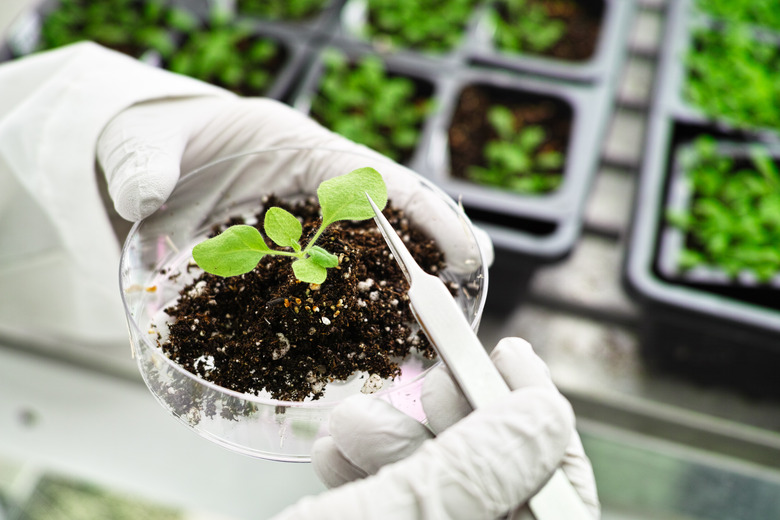High School Biology Experiment Ideas
High school level biology covers all aspects of biology, including animals, plant life and humans. That should mean it's easy to come up with a science fair project or a classroom research project, but the amount of topics sometimes makes it even harder. When you first start researching, you'll find thousands of ideas and it's difficult to decide which one is best for your situation. Provided that you know what you want to do and what your teacher or judges are looking for, it's easy to come up with a great biology experiment.
Effects on Plants
Effects on Plants
Test the effects of different substances on plants. Place plants from the same source in pots of the same size, then use different types of materials. You can test different types of potting soil against regular dirt or use the same type of potting soil and test other substances. Water the plants with different types of bottled water and tap water from your home and other homes or add a small amount of vinegar and other liquids to see how the plants react to those substances. Observe the effects of the different substances on the plants and measure how quickly each plant grows in comparison to the others.
Water Bottles
Water Bottles
Test the amount of germs and toxins found when you refill a water bottle. Start by taking a sample swab from the outside lip of the bottle and looking at the water under a microscope for any bacteria or impurities. Then drink from the bottle as you otherwise would and test the bottle each time you refill it with extra water. Student athletes can even use the same plastic water bottles they carry with them to practice every day. Each time, you'll want to swab the inside lip of the bottle and look at the swab under a microscope. Identify any bacteria or toxins by looking at the examples found in your textbook.
Public Germs
Public Germs
You might be surprised when you check different public areas for germs. Take swabs at public bathrooms, in your classroom, on the door handles at stores and even books at the public library. Look at the swabs under a microscope and see what types of germs you find. Then offer a comparison of the germs and explain your findings. Discuss which germs are harmful and what levels of germs you found.
Hair
Hair
Do a biology experiment focusing on how the hair reacts to different types of products. Test shampoos, conditioners, hair gels, hair sprays and other products. Look for residue left behind by the product, but take a few sample hairs before you begin. Check the consistency and health of the sample hairs under a microscope and compare those results against hairs after using the products. Observe any changes you notice in the look or feel of your hair, as well. Then look for signs that the hair has become more damaged or healthier since you used the product. You'll need to narrow it down to just a few products, but if you have more time, use one product for several days before switching to another.
Cite This Article
MLA
Eblin, Jennifer. "High School Biology Experiment Ideas" sciencing.com, https://www.sciencing.com/high-school-biology-experiment-ideas-6395060/. 13 March 2018.
APA
Eblin, Jennifer. (2018, March 13). High School Biology Experiment Ideas. sciencing.com. Retrieved from https://www.sciencing.com/high-school-biology-experiment-ideas-6395060/
Chicago
Eblin, Jennifer. High School Biology Experiment Ideas last modified August 30, 2022. https://www.sciencing.com/high-school-biology-experiment-ideas-6395060/
